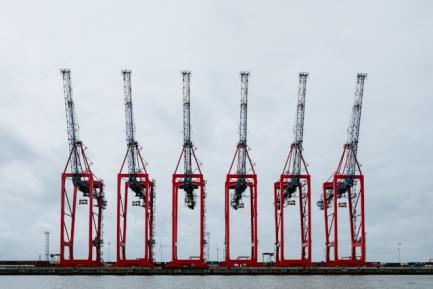
The export intensity of Spain’s economic sectors
We analyse the changes in the export intensity of the various sectors of the Spanish economy dedicated to non-tourism goods and services, in order to diagnose the current state of the Spanish foreign sector and its recent evolution.
What is the current state of the foreign sector in Spain and how has it evolved in recent years? In this Focus, we analyse the changes in the export intensity of the various sectors of the Spanish economy dedicated to non-tourism goods and services.1
Between 2016 and 2021,2 the period for which detailed information is available, Spanish companies’ sales abroad increased by 20%, with notable increases in both exports of goods (21%) and non-tourism services (19%). The increase has been widespread, as 78% of the sectors analysed experienced an increase in sales abroad during the period. This increase corresponds to an expansion
of the export base, both geographically, with sales to markets outside the EU increasing by 36% compared to 10% in the case of EU markets during the same period, and in terms of sectors, with greater internationalisation of some sectors which previously barely conducted transactions abroad.
Which sectors sell the most abroad?
Despite the widespread improvement in foreign sales in most sectors, Spanish exports are highly concentrated
in six sectors (food, metallurgy, chemicals, motor vehicle manufacturing, storage and transportation, and wholesale trade), which account for 60% of Spanish firms’ total foreign turnover.
If we look at the evolution between 2016 and 2021, of particular note is the increase in the relative weight of Spanish exports in the storage and transportation sector (+1.6 pps), while the automotive industry has seen its role reduced (–3 pps).

Export intensity: a more granular analysis
Although revealing, the data presented above fail to show the importance of foreign markets for many sectors. Given that a sector’s foreign turnover will depend on its overall size, those sectors which export a significant portion of their production but have a low total turnover are not represented. In order to analyse the situation in greater detail, we use a measure known as export intensity, which is the ratio between the foreign turnover and the total turnover of each sector.3 In this way, we can quantify the role of foreign trade in each sector, free of the distortions caused by their total turnover. Using this measure, the export intensity of all sectors as a whole decreased by 3 pps during the period 2016-2021. However, this reduction has been mainly due to the fall in the export intensity of the manufacturing and extractive industries, which account for a large portion of total exports. In contrast, the export intensity of smaller sectors has increased considerably, such as in the case of beverage manufacturing (+9 pps), the film industry (+4 pps) and storage and transportation (+13 pps), where exports now account for a third of their total sales.
There has thus been a convergence among sectors, and the differences in export intensity between sectors are now at a minimum. Those sectors which had lower export intensity4 at the beginning of the period show higher growth (+1 pp) during the period than those which began with greater intensity (–5 pps). The foreign sector is now a more essential market for more economic sectors and reflects the expansion of the Spanish economy’s export base.
During the period analysed, export intensity grew more in non-tourism service activities (+1 pp) than it did in
the case of manufacturing and the trade of goods, which on average experienced a reduction in export intensity (–3 pps), thus consolidating non-tourism services as a major driver of Spain’s foreign trade.

Features of sectors with high export intensity
The business characteristics observed in sectors with above-average export intensity are markedly different
to those observed in sectors with lower intensity.
In particular, companies in sectors with higher export intensity invest more, in both tangible and intangible assets, and in the latter case contribute to greater human capital formation. They create more high-quality employment, since a larger portion of their workforce are employed on permanent contracts (although the difference is small) and they incur higher expenditure on wages and social security contributions per employee. In addition, on average the sectors with higher export intensity have a much higher number of large companies (3%) than those with lower export intensity (0.3%).




